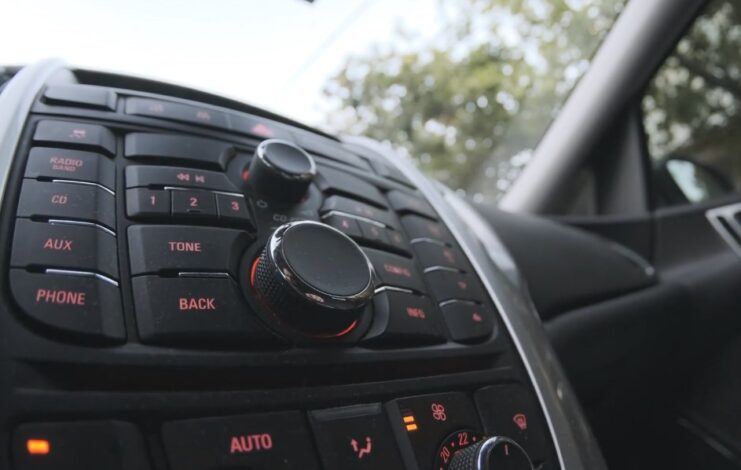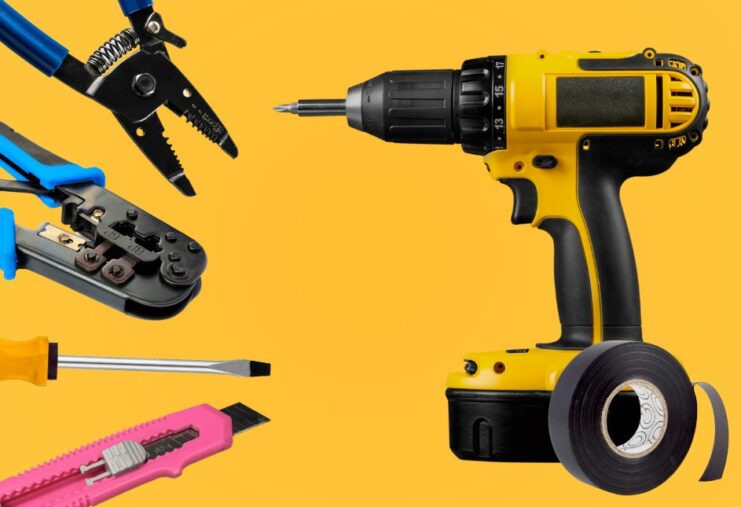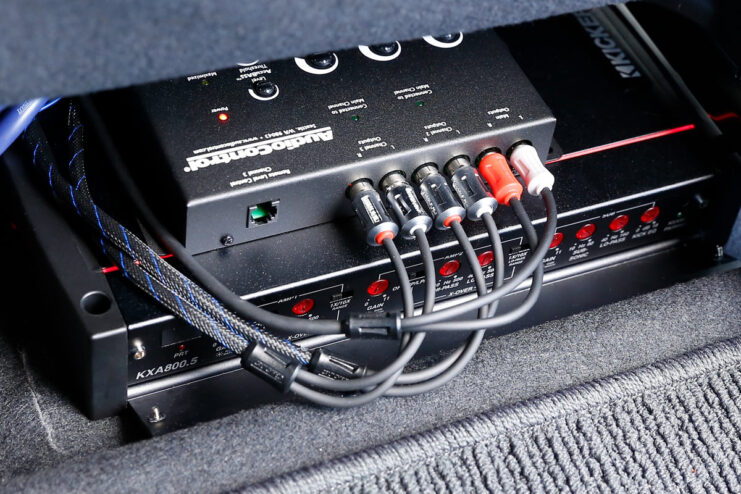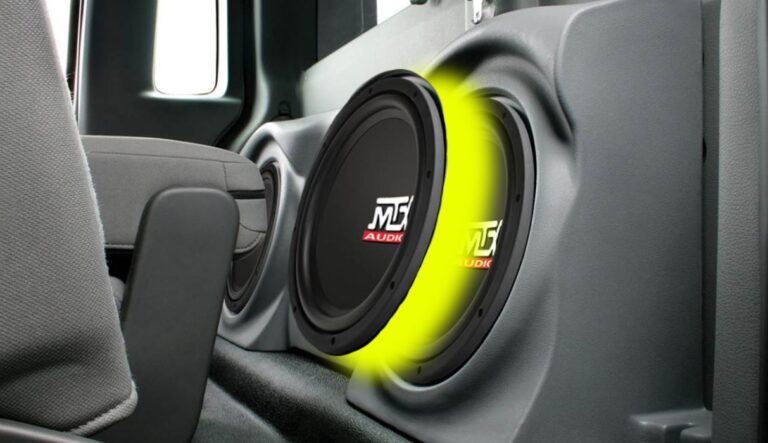Do you remember the first time you felt the power of a subwoofer? For me, it was at a live concert. The thump of the bass drum, the growl of the bass guitar—it was as if the music had surrounded me, swallowed me whole. It wasn’t just a sound; it was a physical experience reverberating through every cell in my body.
From that moment on, I knew I couldn’t go back to my plain old factory stereo system. Luckily for you, you don’t have to either.
Whether you drive a vintage cruiser or a modern sports car, this guide will teach you how to install a subwoofer to a factory stereo. We’ll dive deep into the nitty-gritty, from choosing the right subwoofer to connecting wires, ensuring that you’re not just listening to music but feeling it.
Why Add A Subwoofer To Your Factory Stereo?

Before we start tinkering with your car’s stereo system, let’s pause and ask ourselves a fundamental question—why add a subwoofer? If you’re reading this, you likely have a reason, but understanding the full scope of advantages will motivate you throughout this technical journey.
Enhanced Sound Quality
A factory stereo can give you decent sound, but it usually lacks the deep bass that a subwoofer provides. A subwoofer enhances the low-frequency range that your standard car speakers can’t handle. This means you’ll experience music with more depth and dimension. The drums in your favorite rock song will hit harder, and the bass line in that electronic track will be much more pronounced.
Personalizing Your Listening Experience
Everyone has their own unique taste in music, and a subwoofer allows you to fine-tune your audio system to your liking. Whether you’re a fan of classical music and want to feel the depth of a double bass or a hip-hop aficionado aiming for booming bass, a subwoofer lets you personalize your listening experience to an extraordinary degree.
Choosing The Right Subwoofer

It’s not just about buying the biggest or the most expensive subwoofer you find. There are several considerations, like size, power, sensitivity, and impedance, that need to be evaluated. Let’s help you find a subwoofer that harmonizes perfectly with your needs and your factory stereo.
Size Matters, But Not How You Think
- 8-inch Subwoofers: Ideal for rock, country, and older pop music. Provides tight and precise bass.
- 10-inch Subwoofers: Versatile. Offers a balance of sound clarity and depth, suitable for all types of music.
- 12-inch Subwoofers: For those who like it loud! Perfect for rap, electronic, and heavy rock music.
Sensitivity and Power
These are the two key metrics that will determine how efficient your subwoofer will be in converting power into sound. High sensitivity paired with high power will result in a louder system. Read the specifications carefully and consult experts if needed. Remember, it’s not just about how much power a subwoofer can handle but also how efficiently it handles it.
The Role of Impedance
Impedance is measured in ohms, and it’s essential to match your subwoofer’s impedance with your amplifier for maximum efficiency. Typical car subwoofers have 4-ohm impedance, but 2-ohm and 8-ohm models are also available. Check your factory stereo specifications to make sure you’re getting a subwoofer with compatible impedance.
Tools and Materials Needed

Now that you’ve selected the perfect subwoofer, it’s time to assemble your toolkit. The right tools will make your installation process smooth and safe. Below is a checklist of the essentials you’ll need.
Must-Have Tools
- Wire strippers
- Screwdrivers (Phillips and flat-head)
- Power drill
- Crimping tool
- Electrical tape
- Utility knife
Important Materials
- Subwoofer and enclosure
- Amplifier
- Amplifier wiring kit
- RCA cables
- Speaker wires
- Fuse holder and fuse
- Ring terminals and spade terminals
Installing The Subwoofer
This is the moment we’ve all been waiting for—the installation. We’ll walk you through each step of the process, from connecting the subwoofer to your amplifier to the final sound test. Remember, safety comes first, so always disconnect the battery before you begin.
Step 1: Preparing The Space
Start by identifying a location for your subwoofer and amplifier, commonly the trunk or under a seat. Make sure to measure twice so you don’t face any space issues later. Clean the area thoroughly, and consider laying down a protective mat or plywood base for added stability.
Step 2: Wiring The Amplifier
First, disconnect your car’s battery. Run the power cable from the battery to the location of your amplifier, being careful to avoid any hot or moving parts within the car. Use your fuse holder close to the battery as a safety measure. Connect the ground cable to a metal surface in your car using your drill and ring terminals.
Step 3: Connecting To The Factory Stereo
For this, you’ll usually tap into the car’s speaker wires for the audio signal. You can do this by running speaker wire from one of your car’s rear speakers directly to the amplifier or by using Line Output Converters (LOCs), which turn speaker-level outputs into RCA outputs.
Step 4: Hooking Up The Subwoofer
Connect your subwoofer to the amplifier using a speaker wire. Make sure to consult the wiring diagram specific to your subwoofer to get the correct wiring configuration. Double-check all your connections before moving on.
Step 5: The Sound Test
Reconnect the car’s battery and turn on your stereo system. Play some music and slowly increase the volume to check for any distortion or rattling. Make any necessary adjustments to the amplifier’s settings and secure all equipment firmly in place.
Final Thoughts and Troubleshooting Tips

Congratulations! If you’ve made it this far, you’re now the proud owner of a car audio system enhanced by a powerful subwoofer. But before you start impressing your friends, let’s talk about some common issues and how to solve them.
Addressing Common Issues
- Distorted Sound: Check your connections and settings on the amplifier.
- Subwoofer Not Working: Double-check your power cables and fuses.
- Inconsistent Audio: Make sure the impedance between the amplifier and subwoofer match.
FAQs
How Do I Run the Power Wire?
The power wire should be run from the battery, through the firewall, and into the area where you’ll install the amplifier. It’s crucial to install a fuse close to the battery for safety.
Where Should I Ground the Amplifier?
You should ground the amplifier to a bolt that goes directly into the chassis of the vehicle. Make sure to remove any paint from the grounding point to ensure a good connection.
How Do I Get Music Into the Amplifier?
You’ll need to tap into the speaker wires coming out of the factory stereo and connect them to a line output converter. This will convert the speaker wire signal into RCA outputs that you can run to the amplifier.
What is a Line Output Converter and Why Do I Need It?
A line output converter converts the high-level speaker wire signals into low-level RCA outputs. This is necessary when connecting an amplifier to a factory stereo that doesn’t have RCA outputs.
Can I Run RCA Cables Next to the Power Wire?
It’s not advisable to run RCA cables next to the power wire as it can introduce noise into the system.
What Gauge Speaker Wire Do I Need?
For a subwoofer, it’s recommended to use a thicker, heavier gauge speaker wire to handle the higher power levels.
What is a Remote Turn-On Wire?
A remote turn-on wire is a wire that turns the amplifier on and off with the radio. This wire is usually blue and is essential for the proper functioning of your subwoofer system.
How Do I Connect the Subwoofer to the Amplifier?
You’ll need to run the speaker wire from the amplifier to the subwoofer. Make sure the connections are secure to ensure optimal sound quality.
Final Words
Installing a subwoofer to a factory stereo can seem daunting, but it’s an immensely rewarding project. You get to tailor your audio experience precisely to your taste and immerse yourself in unparalleled sound quality.
So, turn up the volume and let the bass kick in because you’ve just elevated your driving experience to a whole new level.
Related Posts:
- Top 11 Best Computer Speakers With Subwoofer 2024 -…
- How To Tune A Ported Subwoofer Box in 2024 - Modern…
- How To Connect A Subwoofer To An Old Amplifier?…
- How to Project Laptop Screen to Wall Without…
- How To Charge A Bluetooth Speaker Without A Charger…
- How to Paint a Deck: DIY Tips for Transforming Your…







